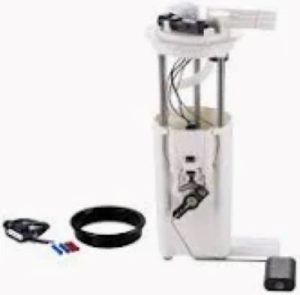When connecting a fuel pump to a fuel line one of the first considerations that must be made is whether or not the pump and line are comparable within close range of size and in pressure. Fuel lines are most often measured by diameter—common sizes include 5/16-inch and the tested stocker size of 3/8-inch for many standard vehicles or larger diameter to accommodate flow rates that exceed 500 liters per hour in applications with high boost. Sealing the connection between the fuel pump inlet and outlet to the fuel line helps to reduce leaks whilst ensuring an average pressurisation of 40–70 psi (270–480 kPa; 2.8–4.9 atm) for standard cars.
Begin selecting the right fittings for the fuel line type and use, such as rubber hose or braided stainless-steel line. Clamps that hold rubber fuel lines should be designed to withstand high pressure, generally 30-40 psi depending on the application. Stretch the hose over the fuel pump barb fitting and use a clamp to secure it so that it does not leak fuel. If you tighten the clamp to more than what the manufacturer specifies—normally within 15-20 in-lbs—you will crush and damage the hose which can reduce its lifespan by even up to 30%.
In addition, a lot of vehicles use AN (Army/Navy) fittings to connect fuel lines, which are also usually threaded. AN fittings are more secure (no hose clamps) and can handle higher pressures, over 90 psi in high-performance fuel systems. After fittings have been threaded in, use a torque wrench to tighten them down between 10-20 ft-lbs of torque. This reduces the chances of overtightening, leading to damaged threads and a weakened seal.

A typical question can be "what to do to avoid fuel leaks while assembling the fuel pump?" The answer lies in using the correct size of fuel line and fittings, along with properly tightening each connection to factory spec. A culmination of over-tightening can cause fittings to crack and under-tightening can cause fuel leaks, decreasing efficiency as well as causing a safety hazard.
After that, immobilise the fuel pump by turning your ignition onto an "on" position without starting the car & let the fuel pump for a bit to pressurize the system. This step checks to see if the fuel flows properly in the lines without any leaks. If the fuel pressure is below 40 psi, there could potentially be a loose fitting or leak somewhere in system which should be rectified immediately.
Get more general information about Fuel Pump montaj ve aksamı and also other variety of Fuel Pump, please visit Kemso Fuel Pump as to provide quality fuel pumps and fit solutions for standard and significant performance automotive applications